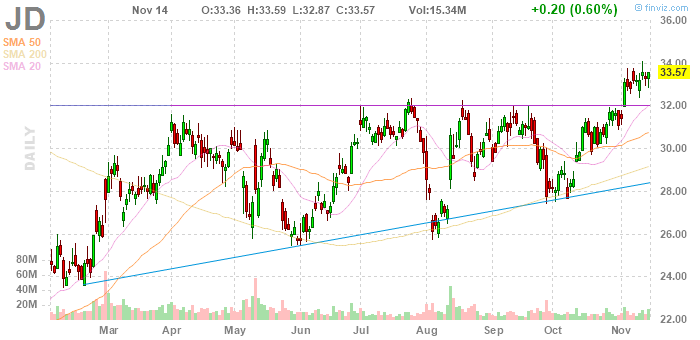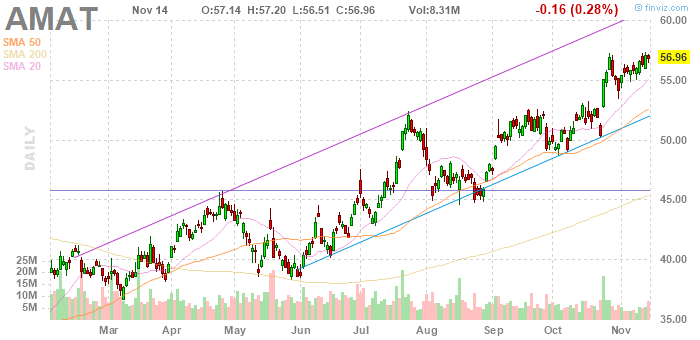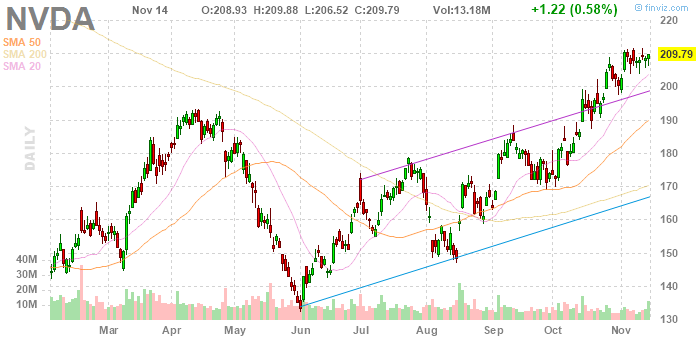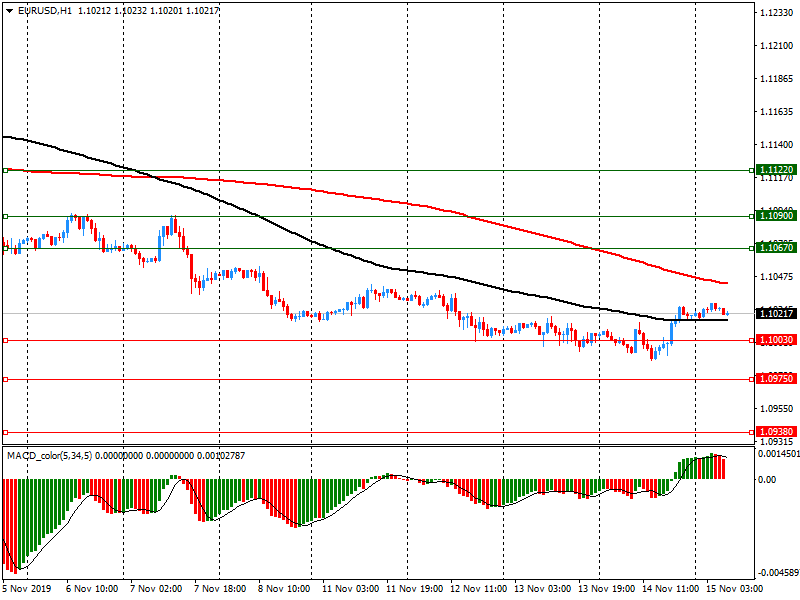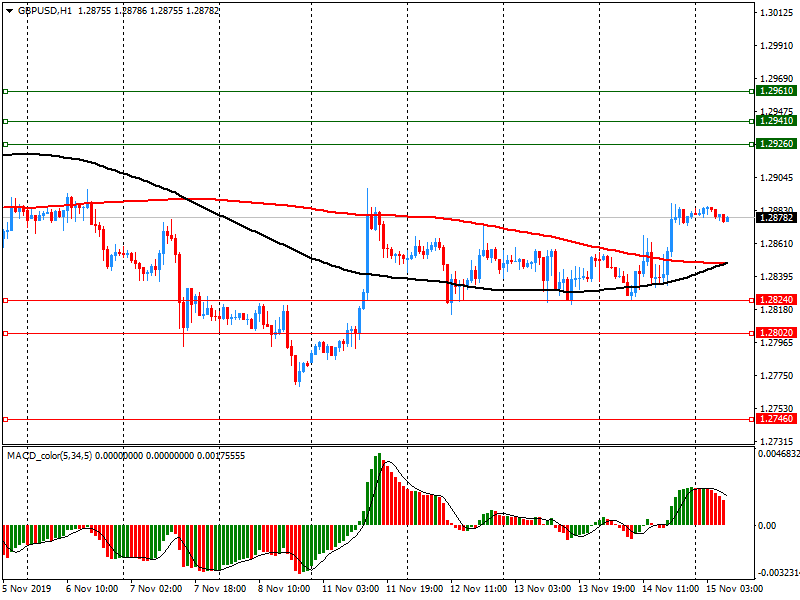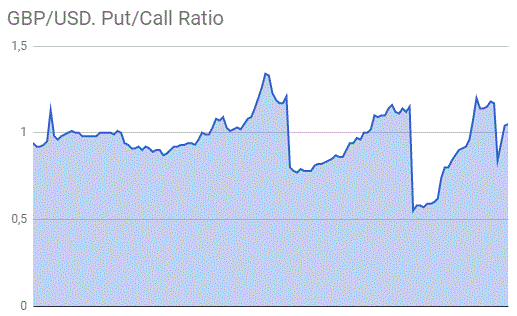- Phân tích
- Tin tức và các công cụ
- Tin tức thị trường
Tin tức thì trường
Rabobank's analysts suggest that, while there is scope for a reprieve if the U.S. and China make some compromises on trade, the headwinds facing world growth have already brought a series of policy measures from central banks across the globe this year.
- “For G10 countries, however, there is no escaping the fact that only the Fed and possibly the BoC attained any traction at normalizing interest rates after the shock of the GFC.
- With interest rates so low, central banks face the dilemma of diminishing returns to monetary policy moves. For some, the risks associated with house price inflation and high levels of household debt are also a consideration for monetary policy settings.
- The consequence is that pressure on governments to use fiscal policies to support growth is widening.”
Analysts at Wells Fargo note that October retail sales data released today revealed that control group sales continued to rise at a solid pace, but have cooled from their breakneck pace earlier this year.
- “Retail sales bounced back in October, rising 0.3% over the month. This was a welcome sign after retailers saw the first decline in sales (-0.3%) in seven months in September. While the report was broadly positive, only six of thirteen retail categories reported higher sales, and with sales reported in nominal terms, we suspect some of the gains were price-related.
- Looking through some of these volatile components, control group sales, which excludes sales at restaurants, gasoline stations, building materials stores and auto dealers, also rose 0.3%. That trend-like gain, however, wasn’t enough to sustain the breakneck, and unsustainable, pace of growth in recent months, and pushed the three-month annualized rate down to 4.0% in October. While that is still a solid pace, it’s the slowest in nine months.
- August and September sales were revised lower, but the October retail sales report still suggests no material change to our forecast of a 5% gain in 2019 holiday sales.”
The Commerce
Department announced on Friday that business inventories were flat m-o-m in September,
following a revised 0.1 m-o-m decline in August (originally unchanged m-o-m).
That was below
economists’ forecast of a 0.1 percent m-o-m increase.
According to
the report, inventories at wholesalers declined 0.4 percent m-o-m in September,
while retail inventories increased 0.2 percent m-o-m and stocks at
manufacturers grew 0.3 percent m-o-m.
Retail
inventories excluding autos, which go into the calculation of GDP, rose 0.2
percent m-o-m, following a 0.3 percent gain in the previous month.
The Federal
Reserve reported on Friday that the U.S. industrial production fell 0.8 m-o-m
in October, following a revised 0.3 percent m-o-m decline in September
(originally a 0.4 percent m-o-m decrease). That marked the steepest contraction
in industrial output since May 2018.
Economists had
forecast industrial production would reduce by 0.4 percent m-o-m in October.
According to
the report, much of the October decline in industrial production was due to a 7.1
percent m-o-m tumble in the output of motor vehicles and parts that resulted
from a strike at General Motors (GM), U.S. major manufacturer of motor
vehicles. Excluding motor vehicles and parts, the overall index moved down 0.5
percent m-o-m, and the index for manufacturing edged down 0.1 percent m-o-m.
Meanwhile, mining production dropped 0.7 percent m-o-m, and utilities output decreased
2.6 percent m-o-m.
Capacity
utilization for the industrial sector decreased 0.8 percentage point m-o-m in October
to 76.7 percent. That was 0.4 percentage point below economists’ forecast and 3.1
percentage points below its long-run (1972-2018) average.
In y-o-y terms,
the industrial output dropped 1.1 percent in October, following an unrevised
0.1 percent fall in the prior month.
Analysts at TD Securities note that the PBoC added liquidity to the banking system offering CNY 200bn in 1y MLF loans while leaving the interest rate on MLFs unchanged at 3.25%.
- “With the latest MLF the PBoC has injected a net CNY 47bn into the market this month. The easier liquidity follows softer data releases over recent weeks and we expect it to be followed by a slightly lower 1y (loan prime rate) LPR next week.”
U.S. stock-index futures rose on Friday, supported by White House economic advisor Larry Kudlow’s statement that China and the U.S. were getting close to reaching a trade deal, as well as better-than-expected October retail sales data and a slew of solid corporate earnings.
Global Stocks:
Index/commodity | Last | Today's Change, points | Today's Change, % |
Nikkei | 23,303.32 | +161.77 | +0.70% |
Hang Seng | 26,326.66 | +2.97 | +0.01% |
Shanghai | 2,891.34 | -18.53 | -0.64% |
S&P/ASX | 6,793.70 | +58.60 | +0.87% |
FTSE | 7,279.51 | -13.25 | -0.18% |
CAC | 5,922.61 | +21.53 | +0.36% |
DAX | 13,208.58 | +28.35 | +0.22% |
Crude oil | $56.97 | +0.35% | |
Gold | $1,468.10 | -0.36% |
The Commerce
Department announced on Friday the sales at U.S. retailers rose 0.3 percent
m-o-m in October, following an unrevised 0.3 percent m-o-m drop in September, supported
by motor vehicle purchases and higher gasoline prices.
Economists had
expected total sales would increase 0.2 percent m-o-m in October.
Excluding auto,
retail sales increased 0.2 percent m-o-m in October after an unrevised 0.1
percent m-o-m decline in the previous month, missing economists’ forecast for a
0.4 percent m-o-m gain.
Meanwhile,
closely watched core retail sales, which exclude automobiles, gasoline,
building materials and food services, and are used in GDP calculations, grew
0.3 percent m-o-m in October after a revised 0.1 percent m-o-m decline in September
(originally unchanged m-o-m).
In y-o-y terms,
the U.S. retail sales rose 3.1 percent in October, following a 4.1 climb in the
previous month.
- Says CAPEX spending is virtually on hold because of trade uncertainty
- Most businesses see competition with China going on for years
- He's optimistic USMCA will pass Congress
- Will be watching to see if global weakness does continue and spreads
- Tariffs put sands in the gears, and makes manufacturing more challenging
(company / ticker / price / change ($/%) / volume)
3M Co | MMM | 171.89 | 0.96(0.56%) | 377 |
ALCOA INC. | AA | 21.12 | 0.13(0.62%) | 1585 |
ALTRIA GROUP INC. | MO | 46.51 | -0.12(-0.26%) | 2303 |
Amazon.com Inc., NASDAQ | AMZN | 1,762.00 | 7.40(0.42%) | 13633 |
Apple Inc. | AAPL | 263.95 | 1.31(0.50%) | 227970 |
AT&T Inc | T | 39.06 | 0.11(0.28%) | 15550 |
Boeing Co | BA | 371.25 | 3.81(1.04%) | 36162 |
Caterpillar Inc | CAT | 144.5 | 1.06(0.74%) | 4381 |
Chevron Corp | CVX | 121.15 | 0.38(0.31%) | 2006 |
Cisco Systems Inc | CSCO | 45 | 0.09(0.20%) | 139950 |
Citigroup Inc., NYSE | C | 74.22 | 0.38(0.51%) | 7742 |
Exxon Mobil Corp | XOM | 68.66 | 0.16(0.23%) | 15124 |
Facebook, Inc. | FB | 194 | 0.85(0.44%) | 37886 |
Ford Motor Co. | F | 8.84 | 0.05(0.57%) | 32728 |
Freeport-McMoRan Copper & Gold Inc., NYSE | FCX | 11.02 | 0.21(1.94%) | 68005 |
General Electric Co | GE | 11.32 | 0.03(0.27%) | 75044 |
General Motors Company, NYSE | GM | 37.19 | 0.39(1.06%) | 603 |
Google Inc. | GOOG | 1,316.00 | 4.54(0.35%) | 2642 |
Home Depot Inc | HD | 238.25 | 1.70(0.72%) | 9697 |
Intel Corp | INTC | 58.03 | 0.22(0.38%) | 24355 |
International Business Machines Co... | IBM | 134.45 | 0.45(0.34%) | 991 |
Johnson & Johnson | JNJ | 131.31 | 0.35(0.27%) | 1800 |
JPMorgan Chase and Co | JPM | 128.99 | 0.39(0.30%) | 3322 |
McDonald's Corp | MCD | 194.9 | 0.90(0.46%) | 3438 |
Merck & Co Inc | MRK | 84.4 | -0.15(-0.18%) | 380 |
Microsoft Corp | MSFT | 148.7 | 0.64(0.43%) | 49379 |
Nike | NKE | 91.7 | 0.43(0.47%) | 3611 |
Pfizer Inc | PFE | 36.61 | 0.06(0.16%) | 4112 |
Starbucks Corporation, NASDAQ | SBUX | 84.65 | 0.27(0.32%) | 5092 |
Tesla Motors, Inc., NASDAQ | TSLA | 352.06 | 2.71(0.78%) | 32769 |
The Coca-Cola Co | KO | 52.75 | 0.12(0.23%) | 2649 |
Twitter, Inc., NYSE | TWTR | 29.05 | 0.16(0.55%) | 57477 |
Visa | V | 180.11 | 0.36(0.20%) | 8080 |
Wal-Mart Stores Inc | WMT | 121.1 | 0.45(0.37%) | 38375 |
Walt Disney Co | DIS | 146.88 | -0.27(-0.18%) | 57883 |
Yandex N.V., NASDAQ | YNDX | 34.5 | -0.06(-0.17%) | 8785 |
Apple (AAPL) target raised to $325 from $300 at Wedbush
Home Depot (HD) target raised to $268 from $246 at Jefferies
The Labor
Department reported on Friday the import-price index, measuring the cost of
goods ranging from Canadian oil to Chinese electronics, fell 0.5 percent m-o-m
in October, following a revised 0.1 percent m-o-m gain in September (originally
a 0.2 percent m-o-m advance). Economists had expected prices to drop 0.2
percent m-o-m last month.
According to
the report, the October decline was driven by both lower import fuel prices (-2.9
percent m-o-m) and lower prices for nonfuel imports (-0.2 percent m-o-m).
Over the
12-month period ended in October, import prices dropped 3.0 percent, weighed
down by declines in both fuel (-13.7 percent) and nonfuel (-1.4 percent)
prices.
Meanwhile, the
price index for U.S. exports edged down 0.1 percent m-o-m in October, following
an unrevised 0.2 percent m-o-m fall in the previous month.
Lower Prices
for nonagricultural exports (-0.3 percent m-o-m) in October offset higher agricultural
export prices (+1.9 percent m-o-m).
Over the past
12 months, the price index for exports dropped 2.2 percent, weighed down by
lower prices for nonagricultural exports (-2.7 percent), while agricultural
prices surged (+2.2 percent).
FX Strategists at UOB Group note AUD/USD remains under pressure and could drop to 0.6765 in the next weeks.
- "24-hour view: AUD plunged to a low of 0.6770, just a few pips above the major 0.6765 support level. The rapid decline is severely over-extended and further sustained weakness is not expected for today. That said, it is too soon to expect a recovery. AUD is more likely to consolidate and trade sideways at these lower levels, expected to be within a 0.6765/0.6810 range.
- Next 1-3 weeks: We held the view yesterday (14 Nov, spot at 0.6810) that the “risk is on the downside but any weakness is likely limited to 0.6765”. AUD subsequently extended its decline and plummeted to 0.6770. While the price action has resulted in a rapid improvement in momentum, longer-term conditions are still rather oversold and the prospect for a sustained decline below 0.6765 is still not that high. That said, AUD is expected to remain on the back foot unless it can move back above 0.6845 (‘strong resistance’ level was at 0.6860 yesterday). Looking forward, if AUD were to move clearly 0.6765, it would likely face another solid support at 0.6725."
JD.com (JD) reported Q3 FY 2019 earnings of RMB 2.08 per share (versus RMB 0.80 in Q3 FY 2018), beating analysts’ consensus estimate of RMB 1.20.
The company’s quarterly revenues amounted to RMB 134.843 bln (+28.7% y/y), beating analysts’ consensus estimate of RMB 128.415 bln.
The company also issued in-line guidance for Q4, projecting revenues of RMB 163-168 bln vs. analysts’ consensus estimate of RMB 163.33 bln.
JD rose to $35.44 (+5.57%) in pre-market trading.
Nordea Markets' analysts think that in the upcoming week, it will be interesting to see whether the FOMC minutes will offer any clues on what the trigger for potentially more easing could be.
- “The widespread narrative that the global growth slowdown is caused by “Trump’s trade war” is false, which makes the current situation more dangerous than it needs to be. It likely also means that the Fed will be less inclined to listen to the market, should a Phase 1 trade deal be signed.
- The USD liquidity situation is now seemingly under control again as the effective fed funds rate is now back in line with the interest on excess reserves. Could the minutes hint that the Fed is definitely not on a pre-set 60’Bs a month course? In such case, the QE narrative would be challenged.
- On Thursday morning we will watch the South Korean trade numbers, since they provide early signals for both world trade in general but also earnings growth worldwide. Markets have been looking for a rebound in South Korean export numbers lately (among other things due to base effects).
- On Friday, we have a make it or break it data print from the Euro area. PMIs are out, and the market has already concluded that the Euro-area PMI outlook has bottomed out. If you ask Sweden, that is not the case by any means. Sentix and ZEW investor expectations speak in favour of a substantial rebound.
- Christine Lagarde will speak in Frankfurt ahead of the PMI release, which makes it too early to expect her to pave the way for more easing. We still consider the euro-area outlook on both growth and inflation so weak that another easing package is needed by March 2020 (double up on QE and another 10bp cut).”
Applied Materials (AMAT) reported Q4 FY 2019 earnings of $0.80 per share (versus $0.97 in Q4 FY 2018), beating analysts’ consensus estimate of $0.76.
The company’s quarterly revenues amounted to $3.754 bln (-0.1% y/y), beating analysts’ consensus estimate of $3.683 bln.
The company also issued upside guidance for Q1 FY 2020, projecting EPS of $0.87-0.95 vs. analysts’ consensus estimate of $0.75 and revenues of $3.95-4.25 bln vs. analysts’ consensus estimate of $3.71 bln.
AMAT rose to $60.00 (+5.34%) in pre-market trading.
NVIDIA (NVDA) reported Q3 FY 2019 earnings of $1.78 per share (versus $1.84 in Q3 FY 2018), beating analysts’ consensus estimate of $1.57.
The company’s quarterly revenues amounted to $3.014 bln (-5.2% y/y), beating analysts’ consensus estimate of $2.915 bln.
The company also issued downside guidance for Q4 FY 2019, projecting revenues of $2.89-3.01 bln vs. analysts’ consensus estimate of $3.08 bln and EPS of $1.56-1.75 vs. analysts’ consensus estimate of $1.70.
NVDA rose to $210.00 (+0.10%) in pre-market trading.
FX Strategists at UOB Group see GBP/USD extending the rangebound theme in the next weeks.
- "24-hour view: GBP traded between 1.2827 and 1.2889 yesterday, wider than our expected sideway-trading range of 1.2825/1.2875. The firm closing in NY of 1.2882 (+0.27%) has improved the underlying tone. The bias from here is for further GBP strength even though the strong 1.2930 level is likely out of reach for today (minor resistance at 1.2910). Support is at 1.2855 followed by 1.2835.
- Next 1-3 weeks: While GBP closed slightly higher at 1.2882 yesterday (+0.26%), the price action lacks momentum. For now, we continue to hold the same view as from Tuesday (12 Nov, spot at 1.2855) wherein the current movement is part of a “sideway-trading phase”. In other words, we continue to expect GBP to trade between 1.2770 and 1.2930 for a while more."
- Trump has not yet indicated any change on 15 December tariffs
- But there is still plenty of time for that
- There will be another trade call with China today
- We are much farther along with details of trade deal with China
- U.S.-China trade deal will be done 'in all likelihood'
- Chinese agricultural purchases and execution of those are an issue
- Huawei not an appropriate player in U.S. 5G space
- U.S. will have deal with China or keep tariffs
Arjen van Dijkhuizen, the senior economist at ABN AMRO, thinks that China’s rise of Caixin’s manufacturing PMI in recent months suggests that confidence amongst private firms is improving, reflecting targeted stimulus and rising hopes of a U.S.-China deal.
- “Hard data show that this has not led to a pick-up in private investment (yet). All this implies that for the Chinese economy to stabilize a ‘Phase one agreement’ marking the end of the US-China tariff tit-for-tat would be welcome, as the escalation of this conflict has proven to be a clear headwind – on top of the effects of China’s previous financial deleveraging campaign. It also shows that more stimulus is needed to support domestic demand.
- We continue to hold the view that Beijing will step up piecemeal stimulus. And we still expect them to refrain from aggressive easing given longer-term constraints such as the need to keep overall debt levels in check and to prevent a housing bubble. Recent measures lend support to this view.
- Following previous mini steps including further RRR cuts, in early November the PBoC cut the rate on its medium-term lending facility by 5 bps, to 3.25%. And this week, Beijing announced to lower capital requirements for certain infrastructural projects.”
Sean Callow, the senior currency strategist at Westpac, notes that the last time AUD traded below 68 cents was the 17th of October, on which Australia reported a fall in the unemployment rate to 5.2%, raising some caution that markets could be over-reacting to monthly volatility.
- “Pricing for the RBA to cut rates in February 2020 jumped from about 50% to 75%. Given that the RBA last week forecast the unemployment rate to sit around 5.2% through end-2020, the recent gyrations in the official data from 5.2% to 5.3% are unlikely to move the dial greatly.
- However, Westpac was already predicting a February rate cut, so we won’t complain about market pricing moving closer to our view. The RBA is closely focused on the labour market and It was not a great week on that front. Along with the rise in the unemployment rate, October employment dropped 19,000, the largest monthly fall since 2016.
- The fall in jobs followed another soft reading on wages growth in Q3. Overall wages grew just 2.2% over the year to September, down from 2.3% in June. The RBA would like to see wages growth closer to 3 ½ percent in order for inflation to return to the middle of their 2 to 3% target band.
- Updates on Australian consumer sentiment and business confidence were also on the soft side of long term averages, to round out a fairly poor week of Australian economic data. But global factors have also chipped away at the Aussie.”
FX Strategists at UOB Group suggest the bearish phase in EUR/USD could be nearly over.
- 24-hour view: EUR dipped to a fresh 1-month low of 1.0987 before recovering to the end the day on a firm note (1.1021, +0.14%). The 1.0987 low is likely a short-term bottom. While momentum is lackluster, there is scope for the current recovery to extend higher to 1.1045. For today, a sustained rise above this level is not likely (next resistance is at 1.1065). Support is at 1.1005 followed by 1.0990.
- Next 1-3 weeks: EUR dropped and touched a fresh low of 1.0987 yesterday before rebounding to close higher by +0.13% (NY close of 1.1021). The price action was not surprising as we have highlighted on Wednesday (13 Nov, spot at 1.1010) that while “EUR is still under pressure, the prospect for a sustained decline below the next support at 1.0970 is not high”. The lackluster downward momentum has deteriorated further and from here, a move above 1.1045 (‘strong resistance’ level was at 1.1065 yesterday) would indicate that the weak phase in EUR that started in the middle of last week has run its course. Looking forward, a breach of 1.1045 would suggest EUR has moved into sideway-trading phase (too early to expect a sustained recovery)."
The Organization of the Petroleum Exporting Countries and its allies face stiffening competition in 2020, the International Energy Agency said on Friday, adding urgency to the oil producer group's policy meeting next month.
"The OPEC+ countries face a major challenge in 2020 as demand for their crude is expected to fall sharply," the Paris-based agency said in a monthly report.
"Surging non-OPEC supply explains this drop, with growth of 2.3 million barrels per day (bpd) next year versus 1.8 million bpd in 2019," it added, citing production from the United States, Brazil, Norway and Guyana.
Demand for crude oil from OPEC in 2020 will be 28.9 million bpd, the IEA forecast, 1 million bpd below the exporter club's current production.
The agency kept its assessments for growth in global oil demand in 2019 and 2020 at 1 million bpd and 1.2 million bpd respectively, but said its outlook might slightly underestimate the impact of tariffs from the U.S.-China trade war.
Analysts at TD Securities are looking for the US retail sales to register a soft 0.1% gain for October as a decline in auto sales likely kept headline sales subdued.
“We expect a rebound in the control group to be the main driver of headline growth, reflecting still-solid consumer spending. Separately, industrial production likely tumbled -0.4% in October owing to a sharp slide in manufacturing activities, which were impacted by the GM strike. Lastly, the NY Empire manufacturing survey will give us a first indication at the performance of the sector in November. The consensus is looking for a modest increase to 6.0 from 4.0 in October.”
According to the report from Eurostat, the first estimate for euro area (EA19) exports of goods to the rest of the world in September 2019 was €196.2 billion, an increase of 5.2% compared with September 2018 (€186.5 bn). Imports from the rest of the world stood at €177.6 bn, a rise of 2.1% compared with September 2018 (€173.9 bn). As a result, the euro area recorded a €18.7 bn surplus in trade in goods with the rest of the world in September 2019, compared with +€12.6 bn in September 2018. Intra-euro area trade rose to €163.4 bn in September 2019, up by 0.9% compared with September 2018.
In January to September 2019, euro area exports of goods to the rest of the world rose to €1 741.9 bn (an increase of 2.9% compared with January-September 2018), and imports rose to €1 586.3 bn (an increase of 2.7% compared with January-September 2018). As a result the euro area recorded a surplus of €155.5 bn, compared with +€147.3 bn in January-September 2018. Intra-euro area trade rose to €1 470.9 bn in January-September 2019, up by 1.4% compared with January-September 2018.
Figures, published by Eurostat, showed that the euro area annual inflation rate was 0.7% in October 2019, down from 0.8% in September. The slowdown was in line with expectations. A year earlier, the rate was 2.3%. European Union annual inflation was 1.1% in October 2019, down from 1.2% in September. A year earlier, the rate was 2.3%.
The lowest annual rates were registered in Cyprus (-0.5%), Greece (-0.3%) and Portugal (-0.1%). The highest annual rates were recorded in Romania (3.2%), Hungary (3.0%) and Slovakia (2.9%). Compared with September, annual inflation fell in fifteen Member States, remained stable in eight and rose in five.
In October, the highest contribution to the annual euro area inflation rate came from services (+0.69 percentage points, pp), followed by food, alcohol & tobacco (+0.29 pp), non-energy industrial goods (+0.07 pp) and energy (-0.32 pp).
UOB Group’s Economist Ho Woei Chen, CFA and Senior FX Strategist Peter Chia assessed the recently published Chinese data and the impact on GDP figures.
“The bulk of China’s macroeconomic data for October have been released and they have broadly pointed to a weakened outlook in 4Q19 in the key areas of manufacturing, private consumption demand and investment. Despite signs of growth moderation, we do not expect the People’s Bank of China (PBoC) to adopt a significantly more aggressive monetary easing stance ahead. Weighed by trade and economic uncertainties, we maintain our view of a higher USD/CNY, towards 7.30 by 2H next year”.
According to analysts at ANZ, for the Australian economy, the impact of monetary policy on housing is clear, but its effect on consumption has been limited, so far.
“The housing market recovery will lift retail. Rising housing prices and turnover tend to support non-food retail sales, and we are already seeing the first signs of that. But the lag between housing strength and a full recovery in retail can be long, and challenges, such as high debt and economic uncertainty, may soften the effect. Retail sales volumes fell in the year to September for the first time since 1991. Non-food sales, in particular household goods, have been struggling in the last couple of years, as housing prices fell. Improvements in the housing market are boosting non-food retail, which grew 0.5% q/q in September, the best result since mid-2018. Households however are using the recent tax and rate cuts to pay down debt, which may delay improvements in household spending.”
The conflict between the two countries could expand beyond trade and technology, Bridgewater Associates founder Ray Dalio said.
“There is a trade war, there is a technology war, there is a geopolitical war, and there could be a capital war. How that is approached is going to determine our futures,” said Dalio. “I hope that it is done with mutual understanding instead of wars -- a win-win relationship rather than a lose-lose relationship.”
Dalio’s comments come as lawmakers in the U.S. are ratcheting up the pressure to slow the spigot of money that has flowed from U.S. pension and investment funds into Chinese companies. The U.S. and China are trying to reach a trade deal, aimed at reducing tariffs on goods that are hurting both economies and bringing an end to a year-long trade war.
The board that oversees retirement savings for U.S. government employees said on Thursday that it would allow one of its funds to invest in an international index that includes Chinese companies. That’s in spite of the threat of legislation from lawmakers who say the investments will undermine national security and contribute to China’s economic and corporate growth.
Mortgage arrears rate at 1%, low by historical, international standards.
Mortgage arrears rates have been increasing in recent years, highest for around a decade.
Unlikely that national arrears rate will increase substantially from here.
Tighter lending standards placed downward pressure on arrears.
Non-performing loans currently pose little risk to health of financial institutions.
The White House is working on a tax cut package for implementation in a second term of U.S. President Donald Trump, White House economic adviser Larry Kudlow said.
Kudlow said the tax cuts would be aimed at bolstering growth and providing tax relief to middle-income families. He said it was in the very early stages, but details would be released next year as part of the 2020 presidential campaign.
China's strongest consumer inflation in nearly eight years won't deter the central bank from cutting a key interest rate next week, as slowing economic growth is a bigger concern for policymakers, traders and fund managers said.
The People's Bank of China (PBOC) will likely lower the Loan Prime Rate (LPR) next Wednesday, for the third time since it introduced the benchmark in August. The rate on the one-year fixing now stands at 4.2% while the five-year is at 4.85%.
Driven by soaring pork prices from the spread of African Swine Fever, China's consumer inflation rose past the government's target of around 3% in October to its fastest pace in almost eight years, posing a dilemma for the PBOC. China's economic growth slipped to its slowest pace in nearly three decades in the third quarter, pressured by slowing global demand and a bruising trade war with the US.
Eleven traders and bond fund managers, and about a dozen analysts and economists, told they expected the LPR to be lowered this month.
A majority of them believe the cut will be a marginal 5 basis points, in line with a 5 basis point cut in a medium-term lending facility (MLF) last week and in keeping with a gradual rather than aggressive loosening.
China's central bank extended 200 billion yuan through its medium-term lending facility on Friday, the second time it has done so this month, while keeping the lending rate unchanged.
The move to add long-term funds caught the market off guard as the central bank had already injected funds last week. Several traders said the cash injection was likely a response to tighter liquidity in the interbank market from late Thursday, which pushed up borrowing costs.
Nie Wen, economist at Hwabao Trust in Shanghai, said the fund injection via MLF loans was to make up for the shortfall in liquidity even after multiple reserve requirement ratio (RRR) cuts so far this year. In the short term, high consumer inflation was keeping policymakers from immediately cutting interest rates, he said.
"But at least it has to release liquidity to support economic growth, especially after October's sluggish credit lending data," Nie added.
The People's Bank of China (PBOC) said on its website on Friday the interest rate on one-year MLF loans remained at 3.25%, the same as previous operation. Last week, the central bank cut the interest rate on MLF loans for the first time since February 2016, but only by a marginal 5 basis points. It also injected 400 billion yuan into financial institutions via the liquidity tool.
Nomura Research discusses a quant insight on the cyclicality of global equity sentiment to make its forecasts for cases of risk-off moves.
"We found that global equity sentiment tends to revert to the mean in roughly 22 trading days on average, while US equity sentiment tends to take around 20 trading days. For example, if global sentiment were to fall below the one-year average today (14 November), we would expect risk-off moves to accelerate through 29 November, followed by a reversal of this pessimism through 16 December (this assumes that the deterioration and recovery processes take 11 trading days each). If conditions were to change, these cyclicality forecast results would also change, of course. But the pattern of sentiment swings thus far shows that 2019 was typified by a repeated cycle of risk-on and risk-off phases lasting about a month," Nomura adds.
Germany's federal budget will rise to about 362 billion euros next year, a draft budget passed by a parliament committee showed, representing an increase of 1.1% from 2019 and sticking to a balanced budget. The amount is 1.7 billion euros higher than proposed by Finance Minister Olaf Scholz.
The centre-left Social Democrat, who is junior partner of Chancellor Angela Merkel, can only keep the budget balanced by tapping a reserve that was meant to be used for the integration of migrants. That set-aside has grown to more than 35 billion euros, of which 10.6 billion euros will be redirected to the regular budget next year, the draft showed. About 7 billion euros are earmarked for incentives to cut carbon emissions, through measures such as insulating buildings, replacing ageing oil heating systems, and higher subsidies for buyers of electric cars.
The budget must still be passed by the full assembly of the lower house of parliament, the Bundestag. The decision is expected at the end of the month.
According to the report from National Bureau of Statistics, China's house prices logged a moderate growth in October.
In 70 major cities, house prices increased 0.5 percent in October from the previous month. Among 70 cities surveyed by the NBS, prices increased in 50 cities compared to 53 in September.
On a monthly basis, house prices fell 0.2 percent in Beijing and by 0.1 percent in Guangzhou. Meanwhile, house prices rose 0.4 percent each in Shanghai and Shenzhen, data showed.
EUR/USD
Resistance levels (open interest**, contracts)
$1.1122 (2569)
$1.1090 (2106)
$1.1067 (1587)
Price at time of writing this review: $1.1022
Support levels (open interest**, contracts):
$1.1003 (3917)
$1.0975 (3211)
$1.0938 (2948)
Comments:
- Overall open interest on the CALL options and PUT options with the expiration date December, 6 is 98645 contracts (according to data from November, 14) with the maximum number of contracts with strike price $1,1200 (5533);
GBP/USD
Resistance levels (open interest**, contracts)
$1.2961 (1081)
$1.2941 (737)
$1.2926 (705)
Price at time of writing this review: $1.2878
Support levels (open interest**, contracts):
$1.2824 (284)
$1.2802 (1645)
$1.2746 (1749)
Comments:
- Overall open interest on the CALL options with the expiration date December, 6 is 30434 contracts, with the maximum number of contracts with strike price $1,3000 (5262);
- Overall open interest on the PUT options with the expiration date December, 6 is 32016 contracts, with the maximum number of contracts with strike price $1,2200 (2301);
- The ratio of PUT/CALL was 1.05 versus 1.05 from the previous trading day according to data from November, 14
* - The Chicago Mercantile Exchange bulletin (CME) is used for the calculation.
** - Open interest takes into account the total number of option contracts that are open at the moment.
| Raw materials | Closed | Change, % |
|---|---|---|
| Brent | 62.44 | -0.48 |
| WTI | 56.88 | -0.87 |
| Silver | 17 | 0.41 |
| Gold | 1470.266 | 0.47 |
| Palladium | 1737.07 | 1.64 |
| Index | Change, points | Closed | Change, % |
|---|---|---|---|
| NIKKEI 225 | -178.32 | 23141.55 | -0.76 |
| Hang Seng | -247.77 | 26323.69 | -0.93 |
| KOSPI | 16.78 | 2139.23 | 0.79 |
| ASX 200 | 36.7 | 6735.1 | 0.55 |
| FTSE 100 | -58.45 | 7292.76 | -0.8 |
| DAX | -49.84 | 13180.23 | -0.38 |
| Dow Jones | -1.63 | 27781.96 | -0.01 |
| S&P 500 | 2.59 | 3096.63 | 0.08 |
| NASDAQ Composite | -3.08 | 8479.02 | -0.04 |
| Pare | Closed | Change, % |
|---|---|---|
| AUDUSD | 0.67854 | -0.75 |
| EURJPY | 119.463 | -0.24 |
| EURUSD | 1.10201 | 0.13 |
| GBPJPY | 139.633 | -0.13 |
| GBPUSD | 1.28809 | 0.24 |
| NZDUSD | 0.63797 | -0.48 |
| USDCAD | 1.32484 | -0.03 |
| USDCHF | 0.98807 | -0.19 |
| USDJPY | 108.398 | -0.37 |
© 2000-2024. Bản quyền Teletrade.
Trang web này được quản lý bởi Teletrade D.J. LLC 2351 LLC 2022 (Euro House, Richmond Hill Road, Kingstown, VC0100, St. Vincent and the Grenadines).
Thông tin trên trang web không phải là cơ sở để đưa ra quyết định đầu tư và chỉ được cung cấp cho mục đích làm quen.
Giao dịch trên thị trường tài chính (đặc biệt là giao dịch sử dụng các công cụ biên) mở ra những cơ hội lớn và tạo điều kiện cho các nhà đầu tư sẵn sàng mạo hiểm để thu lợi nhuận, tuy nhiên nó mang trong mình nguy cơ rủi ro khá cao. Chính vì vậy trước khi tiến hành giao dịch cần phải xem xét mọi mặt vấn đề chấp nhận tiến hành giao dịch cụ thể xét theo quan điểm của nguồn lực tài chính sẵn có và mức độ am hiểu thị trường tài chính.
Sử dụng thông tin: sử dụng toàn bộ hay riêng biệt các dữ liệu trên trang web của công ty TeleTrade như một nguồn cung cấp thông tin nhất định. Việc sử dụng tư liệu từ trang web cần kèm theo liên kết đến trang teletrade.vn. Việc tự động thu thập số liệu cũng như thông tin từ trang web TeleTrade đều không được phép.
Xin vui lòng liên hệ với pr@teletrade.global nếu có câu hỏi.
